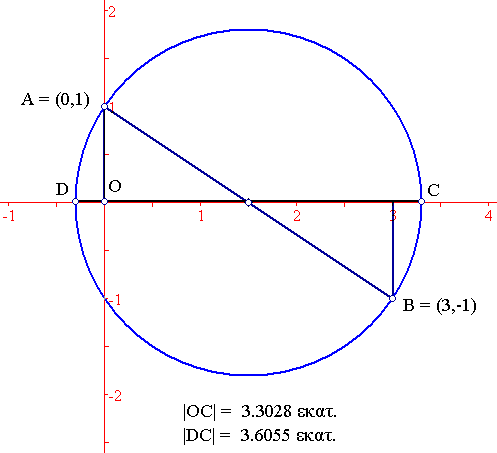
The Golden Ratio, φ=(1+sqrt(5))/2 arises in connection with the Fibonacci Sequence.
The Fibonacci sequence is defined as: F(n+2) = F(n+1) + F(n), with F(0) = 0 and F(1) = 1. To solve the recurrence explicitly, one observes that a solution which satisfies the recurrence has to satisfy the characteristic equation xn+2 = xn+1 + xn, or the equation: x2 = x + 1, from which we get: x1,2 = φ, 1-φ.
The general solution to the recurrence, then, will be F(n) = a*φn + b*(1-φ)n, where a and b are constants. a and b have to satisfy the initial terms as F(0) = 0 and F(1) = 1, from which we get the Binet expression, which solves the Fibonacci recurrence explicitly:


> Rm:=(p,q)->(p+sqrt(p^2+4*q))/2;
> for p from 1 to 3 do
> for q from 1 to 3 do
> print(p,q,evalf(Rm(p,q)));
> od;
> od;
| p | q | R | Sloane Sequence | Continued Fraction |
| 1 | 1 | φ=1.618033988 (Golden)[1] | A000045 | [1,1,1,1,1,1] |
| 1 | 2 | 2 | A001045 | [2] |
| 1 | 3 | 2.302775638 | A006130 | [2,3,3,3,3,3] |
| 2 | 1 | 1+sqrt(2)=2.414213562 (Silver)[1] | A000129 | [2,2,2,2,2,2] |
| 2 | 2 | 2.732050808 | A002605 | [2,1,2,1,2,1] |
| 2 | 3 | 3 | A015518 | [3] |
| 3 | 1 | (3+sqrt(13))/2=3.302775638 (Bronze)[1] | A006190 | [3,3,3,3,3,3] |
| 3 | 2 | 3.561552813 | A007482 | [3,1,1,3,1,1] |
| 3 | 3 | 3.791287848 | A030195 | [3,1,3,1,3,1] |
Construction
Metal Ratios can be constructed geometrically: The solutions to the quadratic x2-p*x-q=0, are the points where the circle whose diameter is determined by the points A = (0,1) and B = (-p,q), intersect the x-axis. Indeed, for the Bronze Ratio, we get the following figure using EucliDraw:

EucliDraw reports: OC ~ 3.3028, while DC ~ 3.6055, hence OD ~ 0.3027. And indeed, the Bronze Ratio is equal to (3 + sqrt(13))/2 ~ 3.302775638, and hence OC and DO are the two roots of the quadratic x2-3*x-1=0.